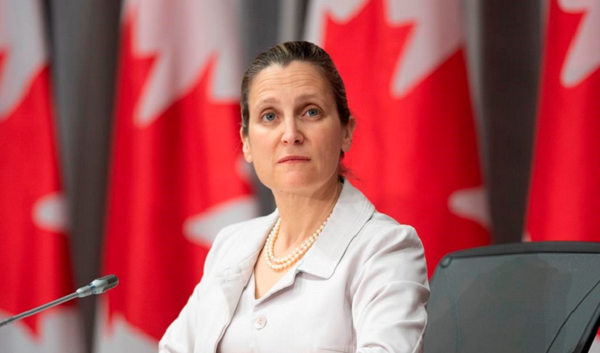Canada’s plan to limit top lending rates could encourage criminality, study shows
Canada’s plan to cut the maximum lending rate for regulated institutions could give illicit financiers an opportunity to step in and serve distressed customers, leading to a rise in criminal activity, a study released on Monday showed.
Finance Minister Chrystia Freeland in the 2023 Federal budget laid out plans to amend the Criminal Code to cap the top annual consumer lending rate for all regulated financial institutions at 35 per cent from 47 per cent to combat predatory lending practices.
This marks the first time in over 40 years that Canada has targeted the peak lending rates, also called the criminal rate of interest.
But the move would lead to a rise in illicit financial activities, endangering Canadians already struggling with increasing costs of living, the Ontario Association of Chiefs of Police (OACP) and Canadian Lenders Association (CLA) said in a statement.
“The legislation has the potential to create a vacuum for criminals to fill,” said Barry Horrobin, Co-Chair of the OACP’s Community Safety and Crime Prevention Committee.
Horrobin argued that illegal predatory lenders could take advantage of Canadians by operating online from outside the bounds of Canadian jurisdiction.
The proposal would restrict access to credit for about 4.7 million Canadians, about 16 per cent of the nation’s population with active credit files, forcing them to rely on payday or illegal lending to meet their credit needs, the study, based on case studies from Quebec, California and Britain, showed.
About 8.5 million Canadians rely on nonprime lenders, according to the CLA, which represents over 300 lenders.
Given the “notable profit margins” of many of these lenders, suggestions that lenders might deny credit to some of the most vulnerable Canadians is “entirely irresponsible,” Katherine Cuplinskas, a spokesperson for the Finance Department said.
The Bank of Canada has raised its benchmark interest rate to a 22-year high of 5 per cent to fight inflation. The prime lending rates for the country’s top six lenders hover around 7 per cent, but subprime borrowers have to pay significantly more.
The study said a significant number of regulated lenders would need to exit the market due to their inability to serve the higher-risk nonprime segment, potentially leading to an increase in criminal activities, including illegal lending and loan sharking.
At the same time, several consumer advocacy groups have cheered the government’s move saying it is the first step to tackling predatory lending.
This article was reported Reuters














